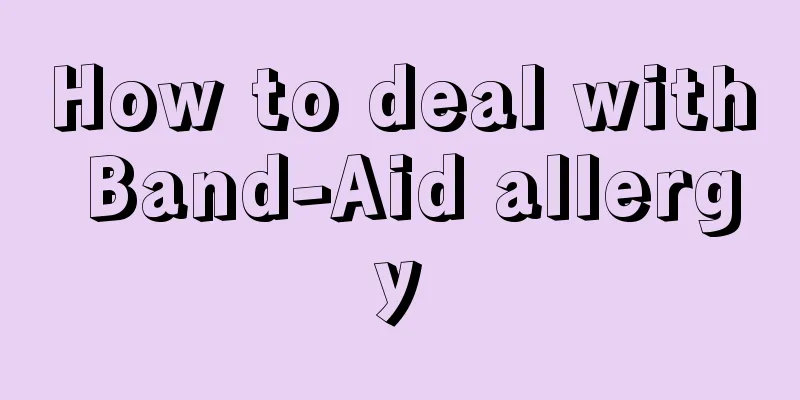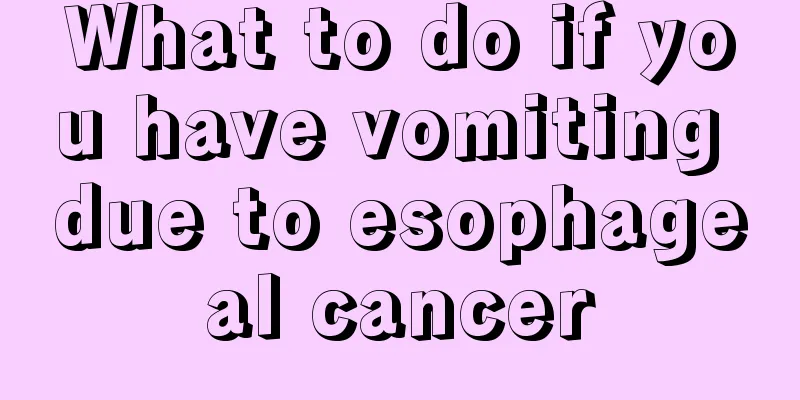How to deal with Band-Aid allergy

|
I believe many people have had this experience. Some people use Band-Aids because of injuries to certain parts of their body, which results in skin inflammation. Some people have mild symptoms that can be relieved on their own, but some are so serious that they need to go to the hospital for treatment. This is because Band-Aids are not used correctly. In fact, Band-Aids are not a panacea and not all wounds can be treated with Band-Aids. So, let me talk about the precautions of Band-Aids. Clinically, orthopedics and emergency departments often admit patients with wound infections caused by incorrect use of Band-Aids. Although they do not require amputation, there are many patients whose wounds do not heal and become ulcerated. Unfortunately, the understanding and misunderstanding of the use of Band-Aids has not attracted people's attention. Small and shallow wounds with bandages Generally speaking, Band-Aids are mainly used for small and shallow wounds, especially for cuts that are neat, clean, do not bleed much and do not require sutures, such as knife cuts, cuts, glass scratches, etc. However, Band-Aids should not be used in the following 7 situations. Which wounds cannot be treated with Band-Aids? 1. Small but deep wounds. Applying a Band-Aid to a small and deep wound will not help the secretions and pus in the wound to be discharged. It is easy for bacteria to grow and multiply, causing or aggravating infection, and it is especially easy to be infected with anaerobic bacteria such as tetanus bacteria. 2. Burns. Do not use Band-Aids on skin ulcers and bleeding after burns, otherwise the secretions will trigger infection. 3. There is foreign matter in the wound. When there is a foreign object in the wound, you cannot put a Band-Aid on it immediately. Instead, you should go to the hospital to clean the wound or remove the foreign object before bandaging it. Some wounds are heavily contaminated or even infected, so you should never use a Band-Aid to cover the wound, otherwise it will cause or aggravate the infection. 4. Being stabbed by an iron nail. If your fingers or toes are accidentally injured by nails or blades, especially if there is rust on the nails or blades, you cannot simply bandage them with a Band-Aid. Be sure to clean it first, then keep the wound exposed to prevent infection, and go to the hospital as soon as possible to get a tetanus shot. 5. Animal scratches and bites. If you use a Band-Aid on wounds caused by animal scratches and bites, it may cause bacteria to accumulate or spread in the wound. Therefore, whether you are bitten or scratched by a pet at home or a small animal outside, you should first rinse it several times with soapy water, then disinfect it with iodine, expose the wound, and go to the hospital for a rabies vaccine. The correct way to use Band-Aid: Change the band-aid at least once a day After opening the Band-Aid package, avoid contaminating the surface. When applying the patch, the medicine surface must be aligned with the wound, and after applying it, apply slight pressure on both sides of the wound. When using a Band-Aid, please note: First, observe the changes in the wound at any time. If you feel a "pulsating pain" similar to a pulse, or if there is secretion overflowing from the wound, you should open it in time to observe whether there is redness, swelling, heat or pain around the wound. If so, it means the wound has become infected and you should seek medical attention immediately. Second, you must protect the wound. Do not pinch or press the wound with your hands frequently. Keep the wound as mobile as possible to prevent collision and prevent it from splitting. Third, Band-Aids should not be used for too long and should be changed at least once a day. Don't circle your fingers. Many people are accustomed to putting a Band-Aid around their fingers after they injure their fingers. In fact, there is a certain danger in using Band-Aids to bandage fingers and toes in a circular manner. If the bandage is too tight, it can easily cause poor blood flow to the fingers and toes, slowing down wound healing. A 4-year-old girl in Suzhou happened to be in this situation. The cloth strips and rubber bands outside the Band-Aid affected blood circulation. What to do if you are allergic to Band-Aid What should I do if I am allergic to Band-Aids? After all, Band-Aids are a convenient way to stop bleeding in an emergency, and they are needed when you have a small wound in your daily life. Therefore, we must first understand the cause of the allergy, whether it is an allergy to the Band-Aid tape or an allergy to the medicine in the medicated Band-Aid. If you are allergic to the medicine, remember to use only non-medicated Band-Aids next time; the effect will be similar. If you are allergic to the tape of the Band-Aid, you can try Band-Aids made of different materials, or liquid Band-Aids, or you can directly use gauze to stop the bleeding. So how do you relieve the allergic symptoms when you are allergic to Band-Aids? Of course, stop using Band-Aids, and then you can use zinc oxide ointment or cyproheptadine ointment for treatment. Pay attention to hygiene and avoid eating spicy food. If the symptoms are severe, you can take oral anti-allergic drugs such as cyproheptadine. Symptoms of Band-Aid Allergy Band-Aid allergy may be an allergy to the adhesive tape or an allergy to the medication in the medicated Band-Aid. But the symptoms of allergies are basically similar. Small blisters and bumps appear on the area where the Band-Aid is applied, and the area may be large or small. The symptoms are redness, swelling and itching. If the blisters are broken, pus will flow out. The editor reminds you that many people’s first thought after being injured is that the wound cannot be exposed to water. Therefore, they do not do any treatment to the wound and directly put on a Band-Aid, thinking that the medicine on the inner layer of the Band-Aid can play a disinfecting role. In fact, before using a Band-Aid, you must first check whether there is any dirt left in the wound. If there is any dirt, you must clean the wound with sterilized saline solution before applying the Band-Aid. |
<<: What should I pay attention to when getting the Haemophilus influenzae type b vaccine
>>: Can I eat apples after a meal?
Recommend
What are the early symptoms of colon cancer
Nowadays, the incidence of colon cancer is gettin...
Seven "on time" tips for maintaining good health in daily life
1. Have a regular physical examination Many disea...
Are there any side effects of taking pethidine?
Demerol is mainly used to deal with pain caused b...
What Chinese patent medicine should I take for nasopharyngeal carcinoma
What Chinese patent medicine should I take for na...
How to improve metabolism and develop a lean body?
With the development of society, people's sta...
What to do if you suddenly faint due to low blood sugar
Many women suffer from hypoglycemia, especially y...
What does chocolate look like when it goes bad
Chocolate is a food that many people like to eat....
Early brain cancer diagnosis pictures
Brain cancer may not show any symptoms in the ear...
Will cervical cancer seriously affect sex life? Do I need to have regular checkups to prevent cervical cancer?
What are the dangers of cervical cancer? Cervical...
What are the conventional medications for fibroids
What are the conventional medications for fibroid...
What to do if there is no baking paper for baking cookies
In daily life, many people like to eat biscuits. ...
How to detect hamartoma
How to detect hamartoma? Modern medicine has made...
Can I drink glucose if I have gastroenteritis?
Glucose is a monosaccharide that can replenish hu...
What special problems will kidney cancer encounter during treatment?
The treatment of kidney cancer is mainly surgical...
Will false body odor disappear
Body odor is a disease in which the armpits emit ...









